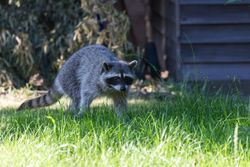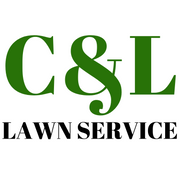
If your soil has grubs, you must treat the cause, not only the symptoms, to remove them. An integrated approach to lawn care that combines insect control, weed management, aeration, and regular fertilization is necessary to keep lawns healthy and green every year. These practices are particularly beneficial for restoring a yard damaged by grubs. Below are a few questions that homeowners have about this topic.
What You Should Know About Lawn Care for Grubs
What are they?
They are the larval form of beetles, and they feed on plant roots before transforming into adults. They’re milky white, C-shaped, and wormlike in appearance. Their heads are brown, and they have three pairs of legs. A beetle lays its eggs in a lawn in mid to late summer, and when the eggs hatch, grubs burrow into the ground. As they feed on the roots of grass and grow larger, they molt several times before emerging as adults in the following spring.
How do you know if a lawn has them?
If you have grubs, you’ll see irregularly shaped brown patches in your lawn where the grass is dying—especially in late summer. To confirm their presence, use a hoe to cut into the earth a couple of inches deep and peel back the sod. Look for grubs in the soil where a patch of dead grass touches green grass. If no larvae are present, other factors are likely responsible for the damage.
 Grubs are also unlikely to cause browning in shady parts of a lawn because adult beetles prefer to lay eggs in yards that receive full sun. If you do not notice any brown patches, there are other signs of an infestation. For example, raccoons or skunks clawing up your yard at night to get at grubs beneath the surface is a sure sign of an issue.
Grubs are also unlikely to cause browning in shady parts of a lawn because adult beetles prefer to lay eggs in yards that receive full sun. If you do not notice any brown patches, there are other signs of an infestation. For example, raccoons or skunks clawing up your yard at night to get at grubs beneath the surface is a sure sign of an issue.
How do you get rid of them?
When damage is just starting to show, applying an insecticide helps destroy grubs. Other formulations act as a preventative measure by killing the adult beetles before any damage is noticeable. This is useful if you had grubs in the past.
Can a damaged lawn recover?
To repair a grub-damaged lawn, rake away the dead blades of grass in the fall after the weather cools. Then, water the affected patches to help any surviving plants reestablish themselves. Next, apply a thin layer of soil to restore the evenness of the surface and reseed, keeping the seed moist until it germinates.
If your lawn has grubs, weeds, fungus, or other problems, contact C & L Lawn Service in Austinburg, OH, to keep them in check. Their experienced teams provide comprehensive lawn care services, including insect and weed control, to keep yards across the Tri-State region healthy, lush, and green. Visit them online to learn more about their full-service approaches to fixing lawn care troubles. Call (440) 997-2019 to inquire about scheduling an appointment.
About the Business
Have a question? Ask the experts!
Send your question

